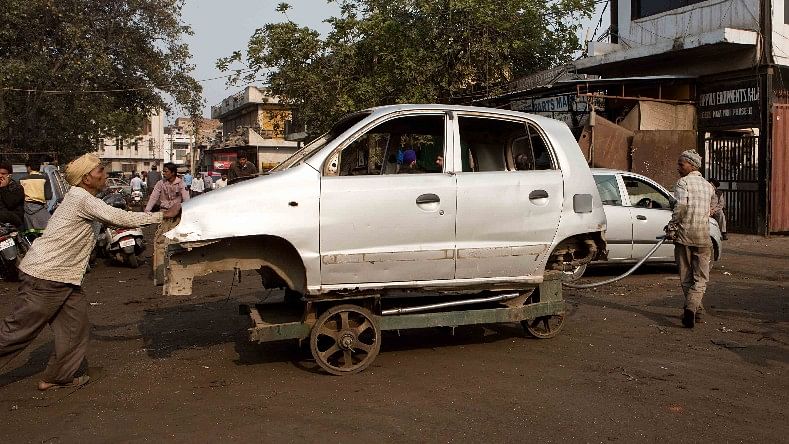Death of a Car: A Day in Mayapuri Junkyard
The last day of a 15-year-old Santro in Delhi.

Mayapuri Industrial Area is where all Delhi cars go to die. Vehicles with expired registrations – diesel cars have a shelf life of 10 years, whereas petrol cars can run for another five – are sold for scrap here.
When I visited Mayapuri’s junkyard, I followed a scrap Santro car which was sold to Harjeet Singh for Rs 17,000.
Singh has been operating in this market since the 90s. He says that the number of cars coming in varies on a daily basis, with up to 4-5 cars coming in on a good day.
E Block in Phase 2 is where the cars are first broken down.
I’m told that it takes about 3-4 hours for a car to be completely disassembled. The parts which are usable are preserved, while the rest are discarded.
Usually, up to three workers work on removing the car parts from its body. Singh pays about Rs 500 to each worker for the disassembling. The seats, electric wires, windscreen, engine and gear oil recovered by these workers is sold in the same market.
23-year-old Vinod Kumar is a daily wage worker who has been working in this junkyard since he was 15. It took him just about 3 months to learn the tricks of the trade.
Once all usable parts of a car are removed, what remains of the body is taken to Dharam-Kaanta where it is weighed. Singh tells me that the body is sold for Rs 10/kg.
The Santro that was just ripped apart in front of me weighs 575 kgs.
From here, the car is taken to the cutting and pressing unit, where a different set of workers cut the metal body into smaller chunks – separating the doors, roof, bonnet and the boot into smaller units.
In the final phase of the breakdown, these smaller units are fed to the presser and are converted into metal cubes.
These metal chunks, I’m told, will now be sent to steel mills for recycling.
(At The Quint, we are answerable only to our audience. Play an active role in shaping our journalism by becoming a member. Because the truth is worth it.)